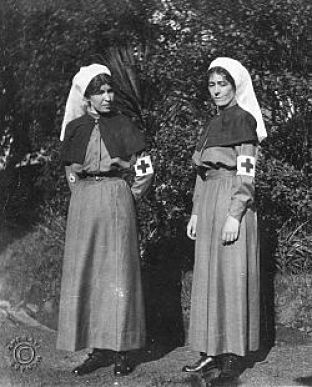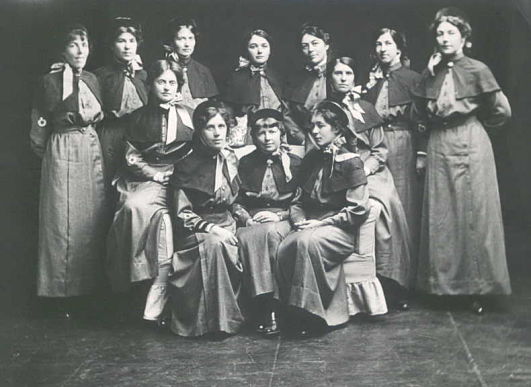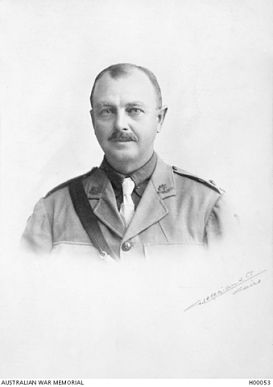WW1 Sister Elsie Mary Emily Cooke ARRC 22/53
Elsie Cooke was one of 10 children (7 daughters and 3 sons) born to Marion Elizabeth (nee Purchas) and Charles Edward Cooke of Victoria Avenue, Remuera on 3rd April 1885 (NZ Births Death Marriages) or 1886, according to her attestation in New Zealand.
She passed the state nursing examination in December 1911 and attained her Auckland Hospital nursing certificate in 1912: her registration number was 1126. She was nursing in Hawera when WW1 started in 1914. [1] A cable had been received by the New Zealand Government from Australia asking for twelve New Zealand nurses (2 sisters and 10 staff nurses) to be ready for sailing on 31 March 1915. The conditions set by the Australian Government were that the nurses had to be:
• Aged between 25 and 35
• Unmarried
• Qualified to the Australian Standard of medical and surgical nursing in a hospital of not less than 100 beds i.e. have New Zealand registration
• They also needed to pass rigid medical examinations [2]
Elsie was chosen as a qualified Auckland nurse along with Hilda Steele, of Arney Road, Remuera. [3] When she attested in New Zealand with the newly formed New Zealand Army Nursing Service (NZANS) on 1st April 1915 for service with the Australian Army Nursing Service Corps, Elsie was 29 years old, 5ft 4” with dark brown hair and hazel eyes. She embarked from Wellington for Sydney, Australia on 1 April 1915 on the Ulimaroa and attested with the Australian Imperial Force on 13 April 1915. [4]
In Sydney, their nursing uniforms were made by David Jones & Co and the company presented each nurse with a black silk umbrella – their ‘camping supplies’ of stretchers, bedding and eating utensils were paid for by the New Zealand Government. [5] The “Chosen Twelve” embarked aboard the HMATS Kyarra on 13 April 1915 headed for Egypt. They were all attached to No.1 Australian General Hospital (1AGH) which went from Egypt to France in 1916. Among their first duties in Egypt was to care for the casualties from Gallipoli. The nurses worked long hard hours to cope with the scale and severity of the wounded.
Elsie’s letter in 1915 to her parents was published in the New Zealand Herald: MORE NURSES WANTED. THE WOUNDED IN EGYPT. AN AUCKLANDER’S WORK. In a letter from Heliopolis to her parents, Mr. and Mrs. C. E. Cooke, of Victoria Avenue, Remuera, Sister Elsie Cooke, who was one of the 12 New Zealand nurses who left with the Australian forces, says: “We could do with 100 New Zealand nurses and 50 masseuses here, and yet I suppose people are still saying that the first 50 were only taken as a compliment to the Dominion. I wish some of the girls who wish to help would come over here and visit the men in the hospitals. They have so few visitors, and do so love to see New Zealanders. We got three hearty cheers and no end of an ovation when we went on duty in the rink. Poor fellows! You feel you cannot do enough for them in return for what they did at the Dardanelles. Four of the New Zealand nurses were sent back to Suez to fit up the Willochra for the returning wounded. They were Sisters Scott, Rose, Fitzgibbons, and myself.” Miss Cooke described the preparations on board the Willochra, and referred further to the men themselves, of whose bravery and fortitude she could not speak too highly. The writer mentioned that Captain Donald Simpson, who returned by the Willochra, had charge of a body of 200 New Zealanders from England. She quoted him as saving that the hospital shins at the Dardanelles were a beautiful sight at night. Every other ship would be in darkness, but the hospital ships were ablaze with light. All round the waterline were twinkling green lights and amid-ships on either side there were huge red crosses in red lights.” [6]
In July 1915 the Australian authorities called for volunteers to open an infectious diseases hospital – Elsie, Hilda Steele and Winifred Scott were accepted and did pioneering work in this area. They also were closely involved in opening a large infectious diseases hospital at Choubra on the outskirts of Cairo. The work was hot and stifling in the Egyptian heat and they had to wear protective clothing as they ran the real risk of contracting typhoid or dysentery themselves. [5] They remained here until March 1916 when they embarked for France with 1AGH.
No.1 AGH with a nursing staff of 117 arrived at Marseille on 5th April 1916, and after a few days waiting for orders, proceeded by rail and arrived at Rouen on April 13th 1916. The severe winter of 1916-1917 was extremely tough for the medical staff in tent hospital with a number of the staff suffering from frost-bite. Many of the casualties from the Somme offensive of 1916 passed through Rouen, and later that year numerous cases of trench foot and pneumonia were treated. In mid-October 1917, days following the Broodseinde attack near Ypres, the number of patients treated at No.1 AGH was in excess of 1,000. [7]
Elsie served on transport duty between Egypt, Australia and England on ships Argyllshire, Orsova, Ormonde and Lanfranc throughout 1916 and 1917 as part of No.14 AGH. On 3 April 1917 Elsie was promoted to Sister but was admitted to hospital herself suffering from debility in November 1917. She returned to Australia from England on the Demosthenes, disembarking in Australia on 19 September 1919. Elsie was awarded the Royal Red Cross 2nd Class “in recognition of the valuable services with the British Forces in Egypt”. [8] Elsie received the Royal Red Cross at the hands of the King, being invested at Buckingham Palace on July 12 1919. [9]. She returned to New Zealand on the Moeraki arriving on Sunday 19th October 1919. Elsie’s health was not good when she returned. Her son Richard wrote that she was probably suffering from post-traumatic stress disorder. [10]
However Elsie married Major Clayton Lewis Timperley on 29 October at Armadale, Melbourne, Victoria in Australia and moved with him to live at Geraldton in Western Australia. They had first met in Egypt when he was with the 10th Australian Light Horse Regiment of Northam West Australia.
During World War Two Elsie was appointed Commandant of Voluntary Aid Detachment No. 59 in 1941. Elsie died aged 85 on 24 October 1970, her husband having died in 1946.



